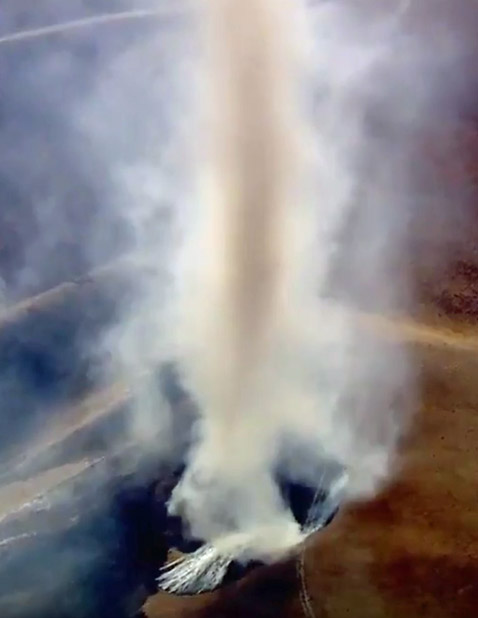
I don’t often associate extreme wildland fire behavior with the United Kingdom, but firefighters with the Leicestershire Fire and Rescue Service grabbed some video of this impressive fire whirl near Swadlincote, a town in Derbyshire, England.
?
Firefighters have captured footage of this fire tornado – or “firenado” – while tackling this morning’s plastic pallets blaze near Swadlincote. It happens when winds mix with smoke and flames ?? pic.twitter.com/nIG3sR2QCG
— BBC East Midlands (@bbcemt) August 7, 2018

We have written about similar phenomenons several times on Wildfire Today. Here is an excerpt from a 2016 article, “Defining fire whirls and fire tornados”:
The news media sometimes calls any little fire whirl a “fire tornado”, or even a “firenado”. We found out today that these and related terms (except for “firenado”) were, if not founded, at least documented and defined in 1978 by a researcher for the National Weather Service in Missoula, David W. Goens. He grouped fire whirls into four classes:
- Fire Devils. They are a natural part of fire turbulence with little influence on fire behavior or spread. They are usually on the order of 3 to 33 feet in diameter and have rotational velocities less than 22 MPH.
- Fire Whirls. A meld of the fire, topograph, and meteorological factors. These play a significant role in fire spread and hazard to control personnel. The average size of this class is usually 33 to 100 feet, with rotational velocities of 22 to 67 MPH.
- Fire Tornadoes. These systems begin to dominate the large scale fire dynamics. They lead to extreme hazard and control problems. In size, they average 100 to 1,000 feet in diameter and have rotational velocities up to 90 MPH.
- Fire Storm. Fire behavior is extremely violent. Diameters have been observed to be from 1,000 to 10,000 feet and winds estimated in excess of 110 MPH. This is a rare phenomenon and hopefully one that is so unlikely in the forest environment that it can be disregarded.”









